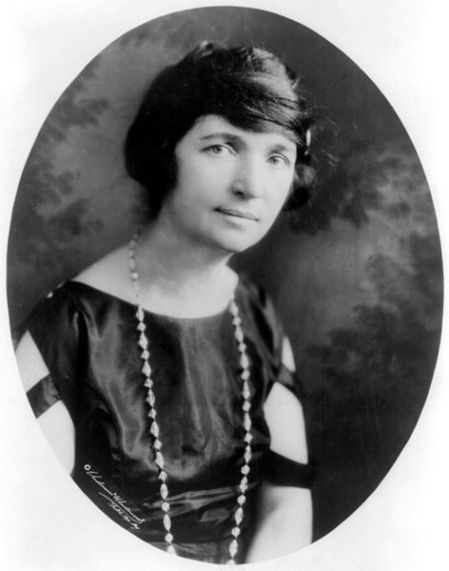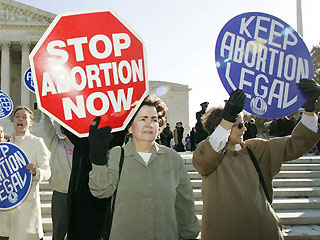
Theory Meets Practice
November 6, 2011Ideals may work beautifully on paper, but this actuality does not usually exist. Organizations may also state goals or mission statements that do not necessarily correspond with their actions. Theory stands as an invaluable tool and as a solid infrastructure, but theory often fails to take into account for reality.
The politics surrounding reproductive rights continues to evolve and become increasingly controversial. The issue becomes even more complex when gender, race, and class intersect. As a result of third-wave feminism, the feminist attack on the pro-choice movement has been, at times, scathing but necessary. In her article, “Beyond Pro-Choice versus Pro-Life: Women of Color and Reproductive Justice”, Andrea Smith discusses some of the hypocrisy and elitism that shaped the early reproductive rights movement, especially the early history of Planned Parenthood. Smith’s ammunition for her criticism of Planned Parenthood is dated. She cites a Planned Parenthood study completed in 1960 as proof of racist and classist ideology, yet that rhetoric reflects much of the racism of the day by presuming that poor women did not possess the intellect to control their own fertility. Here is more information on Margaret Sanger and Planned Parenthood’s origins (compiled by Planned Parenthood). Anti-choice activists distort many of the negative claims directed against Margaret Sanger, and these falsehoods are repeated by even pro-choice activists. While some of Margaret Sanger’s views are worrisome and outdated, the level of demonetization does not equate. Andrea Smith focuses her criticism on Planned Parenthood policies over half a century old, because the organization’s current polices and leaders have worked diligently to expand not only choice, but also accessibility and affordability.
Smith also attacks the current premise of the legal paradigm surrounding reproductive rights and choice in the United States. She claims that NARAL’s and Planned Parenthood’s embrace of the right to privacy enshrined in Roe v. Wade discriminates against underprivileged women, predominantly women of color, especially Native Americans, who rely on federal healthcare which prohibits funding of abortion. Advocates in the 1970s needed to choose the course and argument they believed most likely to be accepted and upheld by the Supreme Court. The current political atmosphere requires compromises. The passage of the Hyde Amendment (which banned federal funding for abortion) struck a blow to the pro-choice movement, but one without the Freedom of Choice Act could not have passed. The lack of federal funding for abortion remains one of the greatest reproductive rights injustices in this country. Women of lower socio-economic class do not face the same availability of choices available to wealthier women, and and the Hyde Amendment discriminated against them. But the U.S. Congress would not have passed any legislation that would have funded abortion. Advocates viewed achieving the legal right to have an abortion as the first step, and access and affordability follows suit. Politics is a game of compromise, and sacrifices need to be made to allow forward progress.
Congressman Henry Hyde of Illinois discusses how he came to sponsor the now infamous 1979 “Hyde Amendment”:
Jessica Arons discusses the implications of the Hyde Amendment, especially for poor women and women of color:
Planned Parenthood works on with many of the same political issues of reproduction discussed in the anthropologists Faye Ginsburg and Rayna Rapp’s article, the “Politics of Reproduction.” A relevant point discussed by Ginsburg and Rapp once again delves into the question of eugenics. They question the role of abortions for fetuses diagnosed with disabilities, and raised additional moral questions. To what extent are women going to be able to control their own bodies? The larger questions deals with whose rights are prioritized: a woman or a fetus or embryo? Despite the flaws of the individualist and the right to privacy approaches adjudicated by the Supreme Court, women are currently capable (at least legally) of controlling their own bodies.
A little over a decade after the groundbreaking decision Roe v. Wade (1973), Supreme Court Justice Ruth Bader Ginsburg wrote an essay entitled, “Some Thoughts on Autonomy and Equality in Relation to Roe V. Wade.” Justice Ginsburg discussed different aspects of the reproductive rights movement and the precedent created by the monumental decision. She wrote that the decision injured the reproductive rights movement because of the legal precedent it developed – that is that the right to privacy and the emphasis of “medically approved autonomy.” Ginsburg argued for an emphasis on a constitutional argument for equality between the sexes. She agreed with Smith’s point that the individualist legal argument sacrificed women of lower economic class and places abortion as a “negative right” – it does not allow an action (i.e. banning abortion) rather than guaranteeing a right (such as access to safe and affordable abortion). She contends that the breadth of the argument of Roe v. Wade and its very ambiguity caused some of the kulturkampf that currently defines the abortion and choice debate.
I disagree with Justice Ginsburg’s argument. While I agree that a constitutional gender equality argument in Roe v. Wade rather may have strengthened reproductive and women’s rights. I do not believe that the legal paradigm determined by Roe v. Wade added or created the controversy attached to the abortion debate. The visceral nature of the debate is not one based in differing legal or constitutionality questions, but more on the moral and ethical issues, marked by dogmatic opinions rather than a logical conversation.



Leave a comment